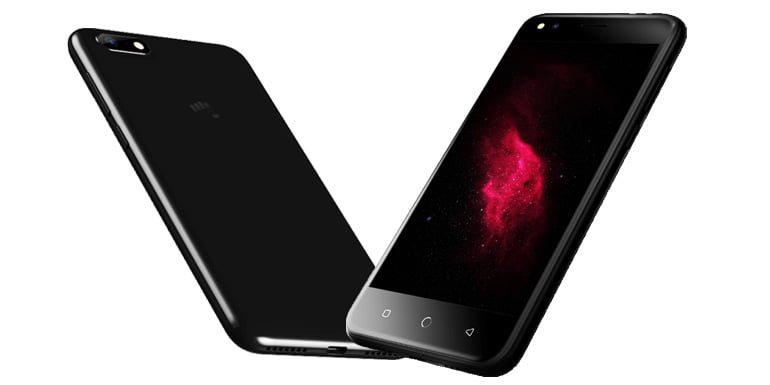Bringing a power packed smartphone in the budget range, Indian mobile vendor Micromax has launched Canvas 1 android smartphone in India. The mobile has been unveiled just within a short period of the relaunch of Canvas 2 (2017). Coming back to Micromax Canvas 1, it features HD display, selfie flash support, quad-core processor and 4G VoLTE support.
As we said earlier, the Micromax Canvas 1 is a budget smartphone and its priced accordingly at Rs 6,999. The mobile will be available to purchase through offline retail stores across India. Just like any device, it comes with one year warranty, but Micromax is offering 100 days free-replacement warranty on any hardware failure.
Canvas 1 Specification and Features
With a striking resemblance to iPhone 7 or OnePlus 5 design (at least on the back side), the Micromax Canvas 1 got a premium look and feel. For colour choices, the mobile is available in Matte Black or Chrome Black colour variant. The device flaunts a 5-inch HD TFT 1280×720 display covered in 2.5D curved glass. Under the hood, you would find a 1.3GHz quad-core MediaTek MT673 processor coupled with 2GB of RAM. To store all your media files the mobile carries 16GB of internal storage. You can further expand the storage up to 64GB using microSD card.

Coming to photography, the Micromax Canvas 1 sports an 8-megapixel autofocus rear camera. It features f/2.2 aperture and dual-tone LED flash. On the front, you get a 5-megapixel selfie camera which also comes with its own LED flash support. It also features 85-degree wide-angle lens and packs Beautify mode. For connectivity, the Micromax Canvas 1 supports 4G LTE network that works with every Indian telcos 4G band. In addition, the mobile also supports VoLTE, which allows you to make HD voice and video calls. Other connectivity options include 3G and 2G network support, Wi-Fi and Bluetooth v4.0. The phone runs on an Android 7.0 Nougat OS with minimal skin over the top. To fuel the device, it packs a 2,500mAh battery, which company claims to offer 7 hours of talk time or 180 hours of standby time.


